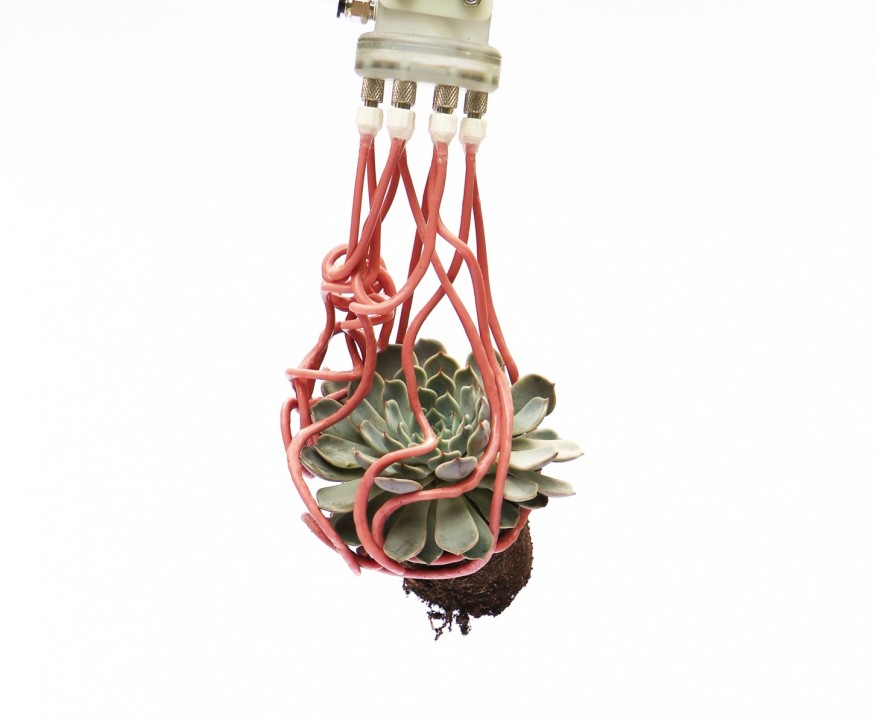The claw machine exemplifies how hard it is to grab objects using robotic grippers. Scientists have always sought to replicate how hands work or even surpass what nature perfected. The latest attempt at copying humanity's fingers is from engineers at Harvard John A. Paulson School of Engineering and Applied Sciences (SEAS).
Most existing robotic grippers use embedded sensors, complex feedback loops, or advanced machine-learning algorithms that rely on the skilled operator to grasp fragile or irregularly shaped objects. But the team has found an easier way to mimic the gripping capabilities of human hands.

Taking Inspiration from Nature
The team of engineers who designed the new robotic gripper took inspiration from nature and designed it like a jellyfish. According to The Verge, the jellyfish-like robotic gripper is an attempt to solve the ever-vexing gripper problem in robotics: the challenge of grabbing things as how human hands would do it.
However, the problem is that human hands are mechanically complex and thus cost a lot to replicate in gears and levers. Human hands, on the other hand, seem to have software that controls them to be incredibly well-tuned and capable of any dextrous movement despite their tendency to drop things.
Trying to replicate or mimic this software is indeed a challenge as many roboticists have tried to avoid the problem by designing hardware that can do some of the useful attributes of a hand.
That is what the jellyfish-like robotic gripper is about as it did not have to have a particularly smart brain to operate but only needs the necessary hardware to pick up, inflate the tentacles, and grab onto the object.
The tentacles are made of rubber that is slightly thicker on one side than the other so it can curl in a specific direction as how fingers fold when grabbing something. The team noted that the strength of each tentacle is weak but combining them allows the robot to grab some heavy objects. The pneumatic design also makes it easy to adjust the force applied so it can grab delicate objects.
Testing the Tentacle Robot
As mentioned, the foot-long rubber tentacles curl like a pigtail when pressurized. The curls knot and entangle each other to hold the object. The strength of the hold increases with each entanglement.
However, each contact with the object is individually weak even though the collective hold is strong so it will not damage even the most fragile object. Simply depressurized the tentacles to let go of the object.
Researchers used simulations and experiments to test the effectiveness of the robotic gripper by picking up a range of objects, like houseplants and toys. According to the press release, some of its real-world applications are picking up fruits and vegetables for agricultural production and distribution, as well as picking delicate tissue in medical settings, and irregular shapes in warehouses.
Their project is based on previous research of topological mechanics off entangled filament by Professor Mahadevan and soft robotic grippers of Professor Robert Woods.
Mahadevan explained that entanglement enables each filament to conform locally with the target object, which leads to a secure but gentle topological grasp that is relatively independent of the nature of the object. Wood added that the new approach of robotic grasping complements existing solutions but with complex filaments that can operate with simple control.
The team further discussed their robotic grippers in their study, titled "Active Entanglement Enables Stochastic, Topological Grasping," which is published in Proceedings of the National Academy of Sciences (PNAS).
RELATED ARTICLE: New Inflatable Robotic Prosthetics Gives Real-Time Tactile Control to Amputees at an Affordable Price
Check out more news and information on Robotics in Science Times.
© 2025 ScienceTimes.com All rights reserved. Do not reproduce without permission. The window to the world of Science Times.












